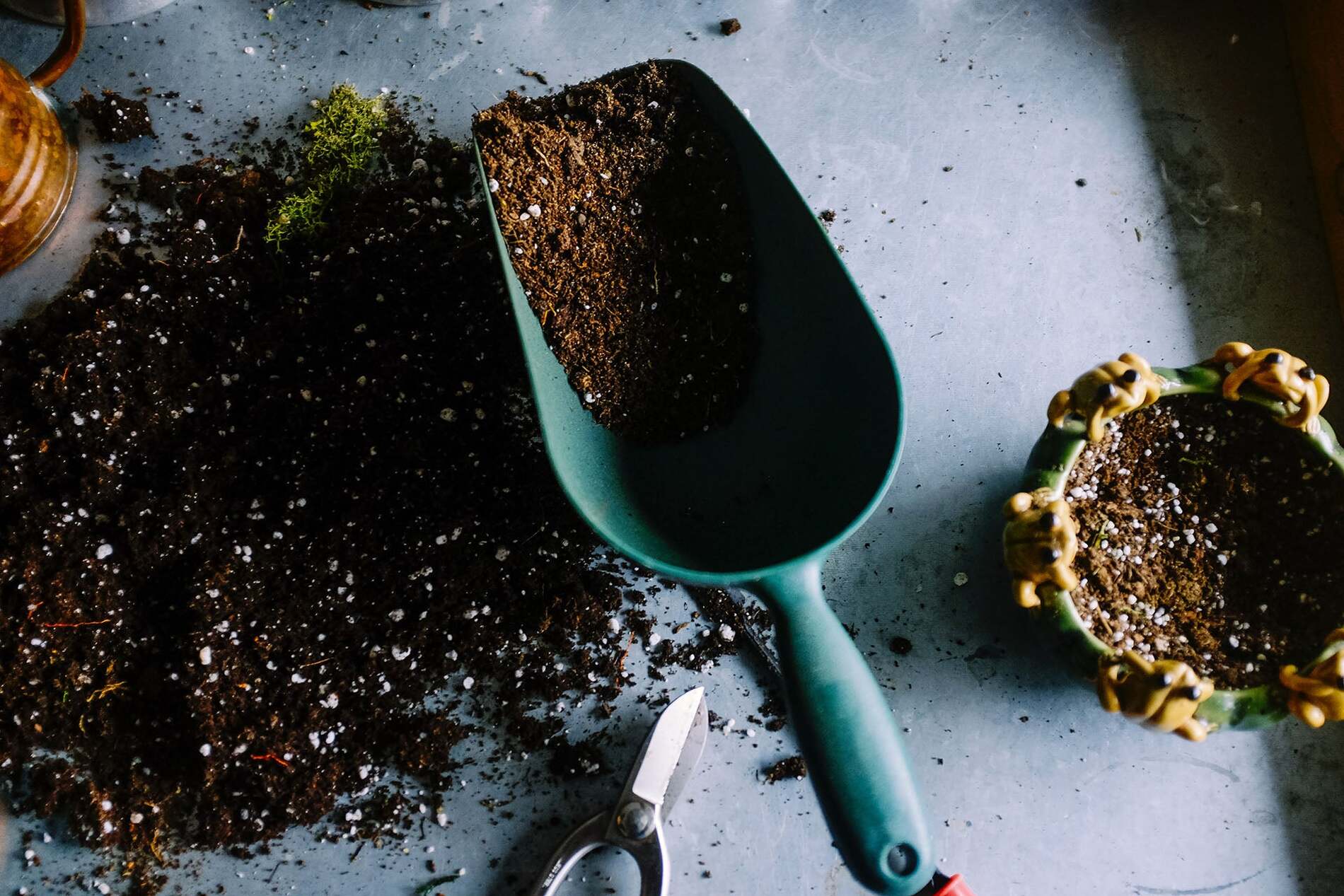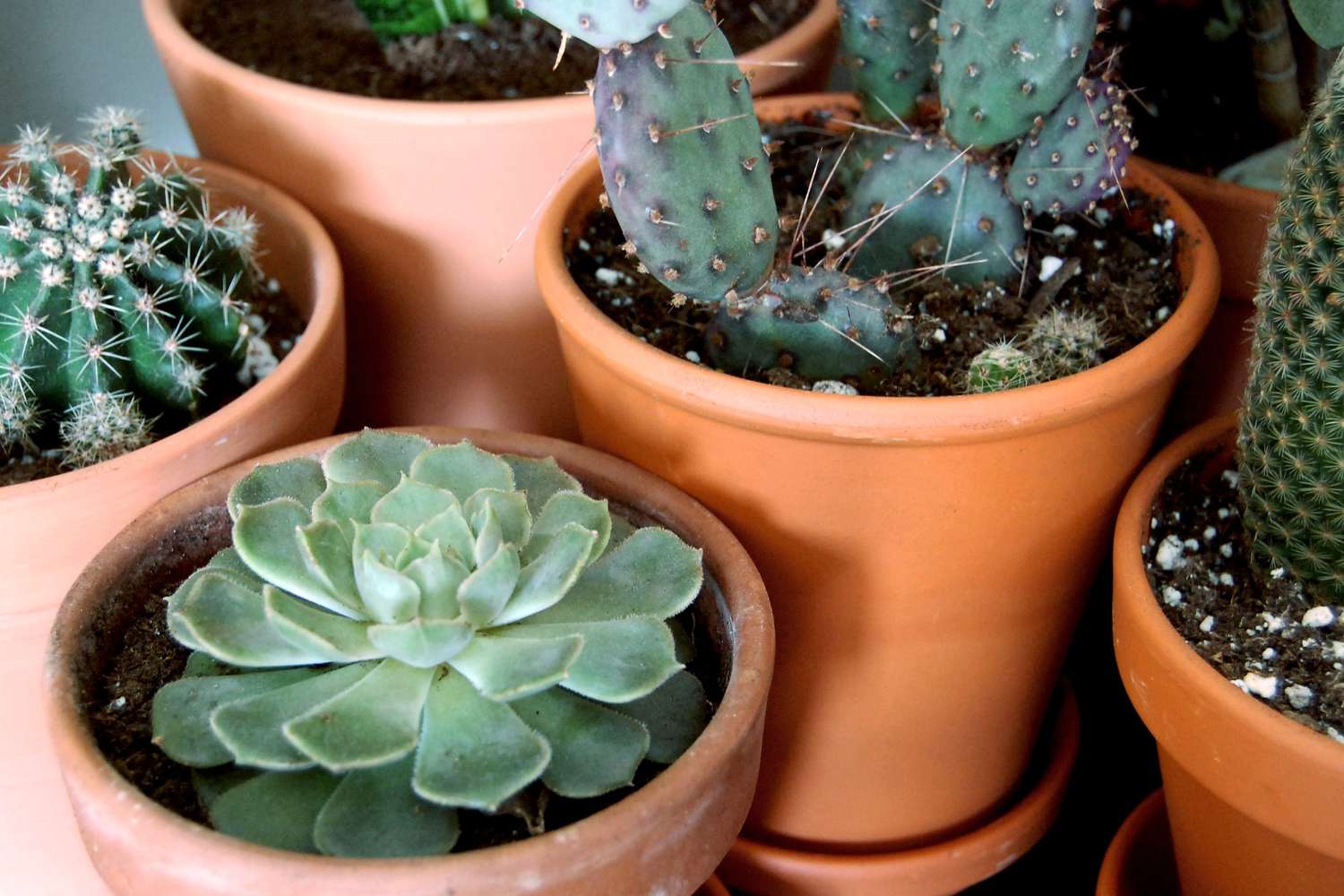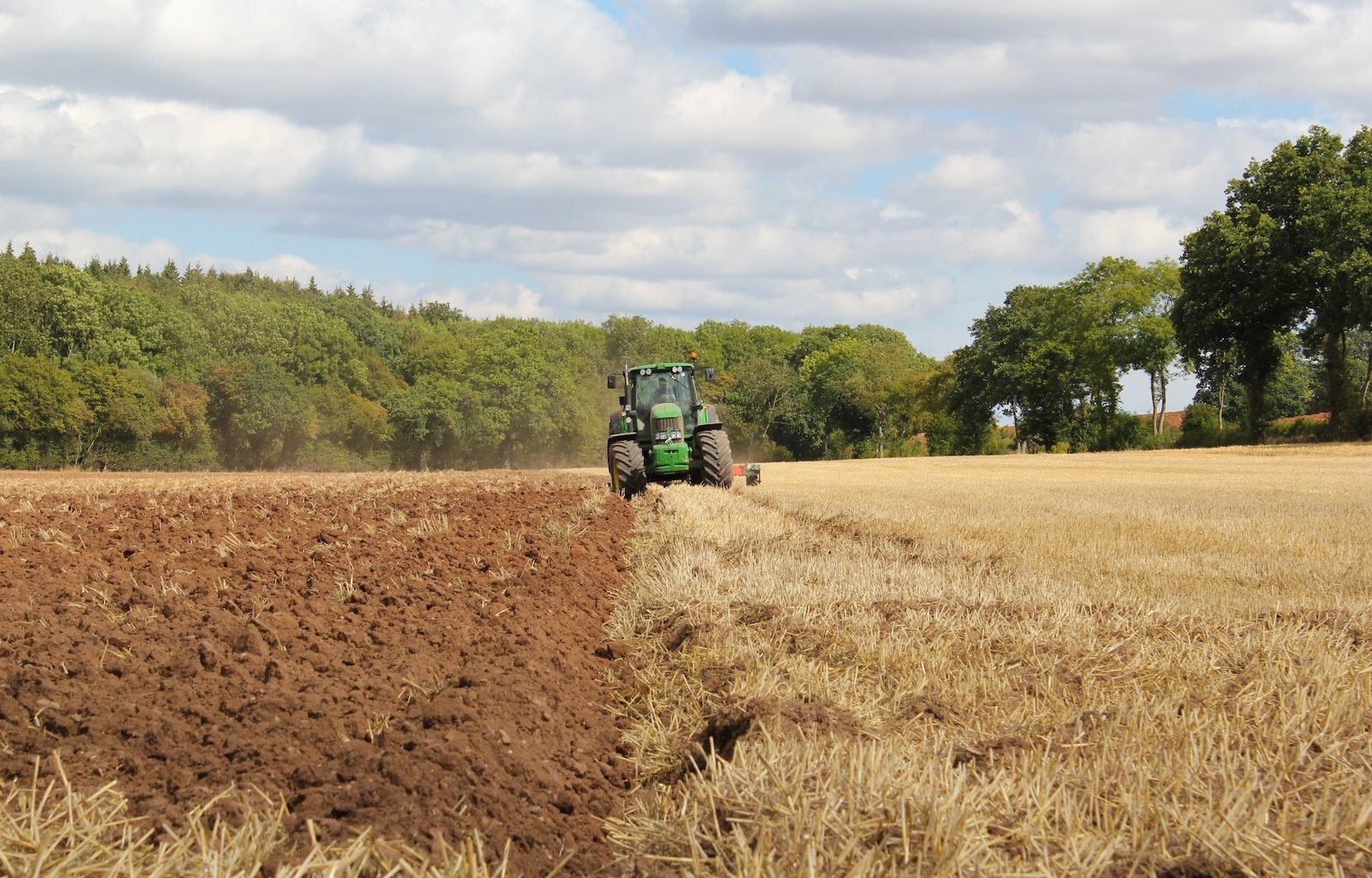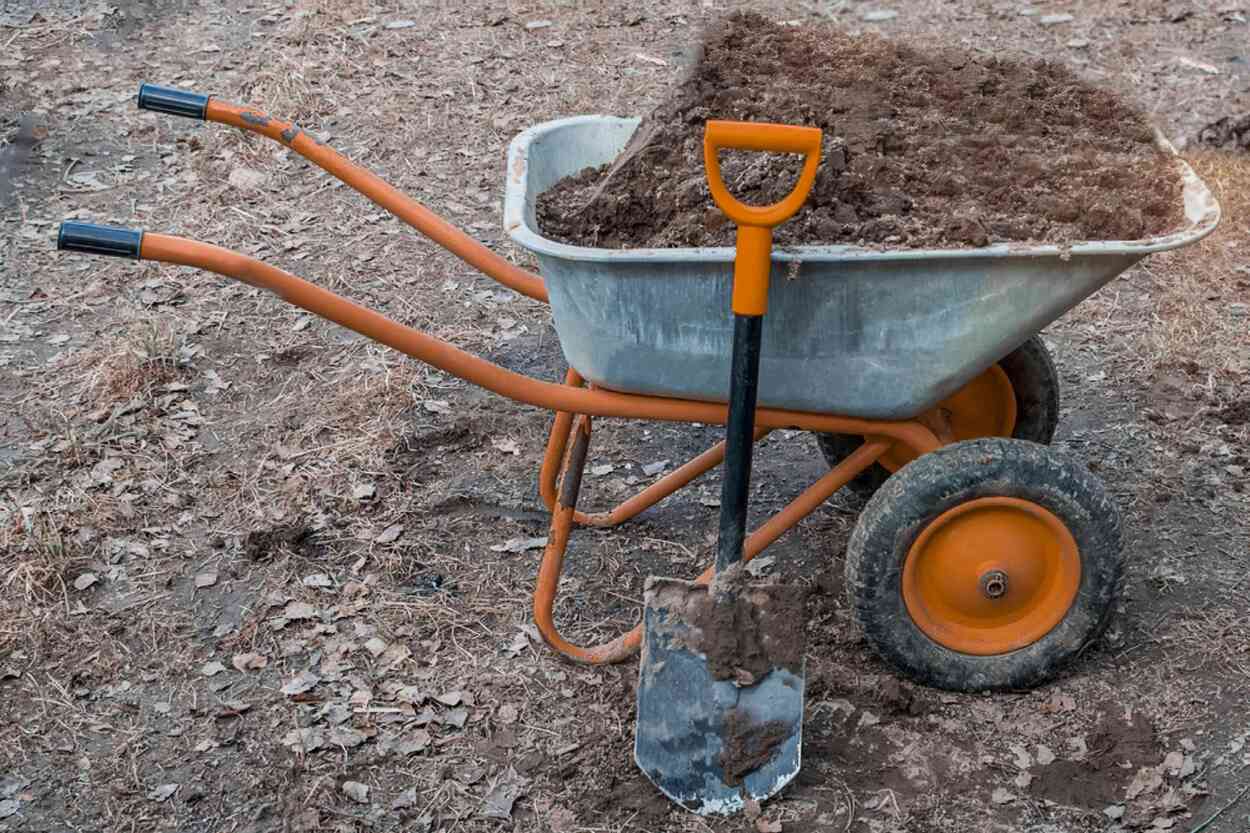Home>Gardening Tips and Tricks>Eco-Friendly Gardening>What Is The Difference Between Mulch And Compost
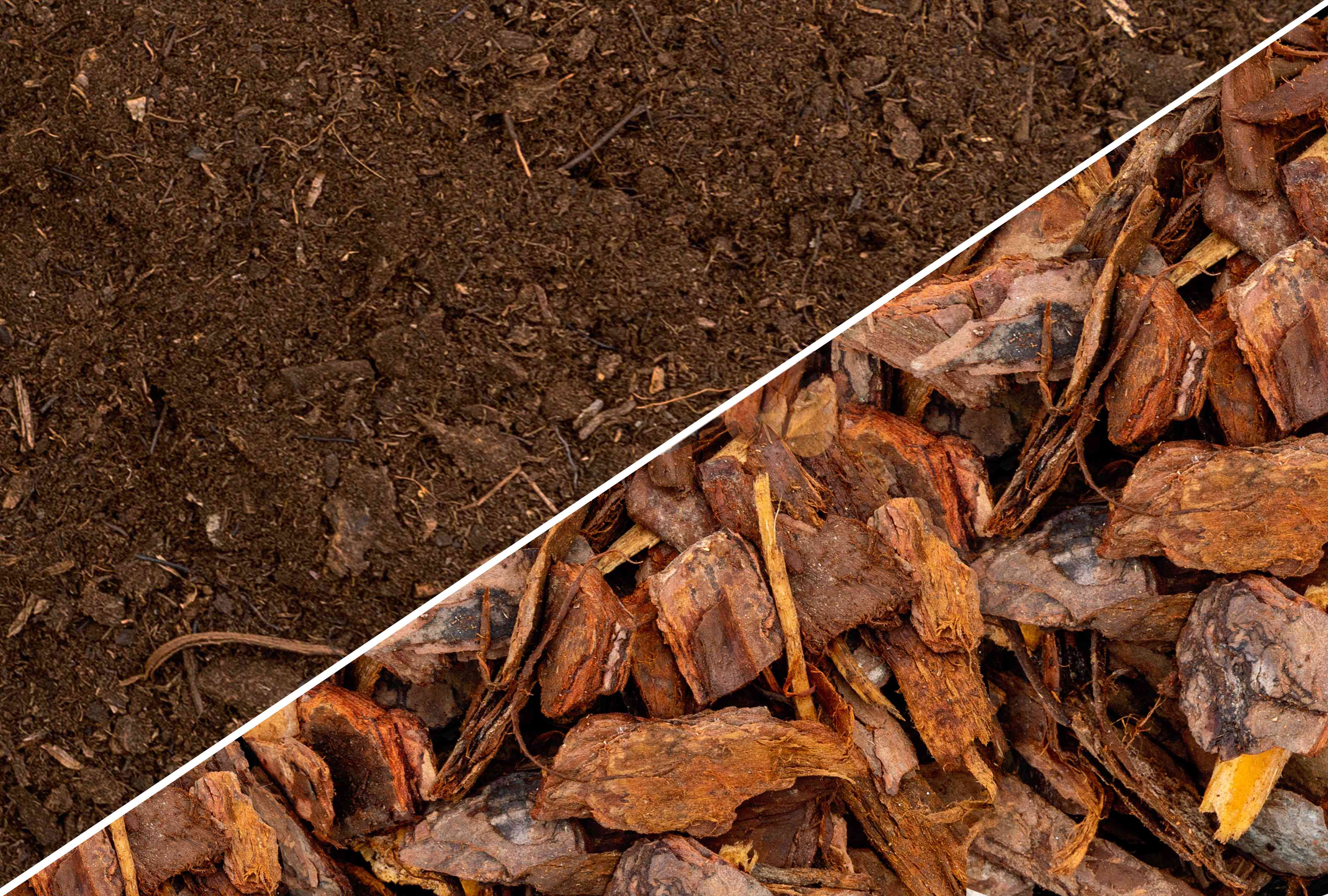

Eco-Friendly Gardening
What Is The Difference Between Mulch And Compost
Modified: January 22, 2024
Learn about the eco-friendly gardening practices with this informative guide. Discover the difference between mulch and compost and how they can enhance your garden's health and sustainability.
(Many of the links in this article redirect to a specific reviewed product. Your purchase of these products through affiliate links helps to generate commission for Chicagolandgardening.com, at no extra cost. Learn more)
Table of Contents
Introduction:
Welcome to the world of eco-friendly gardening! If you have a passion for gardening and want to make a positive impact on the environment, then eco-friendly gardening is the way to go. One of the fundamental aspects of eco-friendly gardening is using mulch and compost to enhance your garden’s health and sustainability.
Mulch and compost are two essential elements in creating a thriving garden ecosystem. While both can be used to improve soil quality, retain moisture, and suppress weeds, it’s important to understand the differences between the two.
In this article, we will explore the distinctions between mulch and compost, their purposes, the various types available, and the benefits they bring to your garden. We will also discuss the factors to consider when choosing the right mulch and compost for your specific gardening needs.
Whether you are a seasoned gardener looking to adopt more sustainable practices or a beginner eager to start your gardening journey on an eco-friendly note, this article will provide you with the knowledge and insights to make informed decisions about mulch and compost usage in your garden.
So let’s dive in and discover the wonders of mulch and compost – the keys to a healthier, greener, and more sustainable garden!
Definition of Mulch:
Mulch is a layer of material that is spread over the surface of the soil in your garden. It serves multiple purposes, such as conserving moisture, preventing weed growth, regulating soil temperature, and improving overall soil health. Mulch can be made from various organic or inorganic materials, including wood chips, straw, grass clippings, leaves, compost, gravel, or even plastic.
The primary function of mulch is to protect the soil by acting as a barrier between the soil and the external environment. By covering the soil surface, mulch helps to minimize evaporation, thus reducing water loss and maintaining a more consistent soil moisture level. This can be especially beneficial in arid regions or during dry spells when water conservation is crucial.
Another important role of mulch is to control weed growth. The layer of mulch blocks sunlight from reaching weed seeds, preventing them from germinating and growing. This reduces the need for manual weeding and minimizes competition for water, nutrients, and space between the desired plants and weeds.
In addition, mulch acts as an insulator, regulating soil temperature by keeping it cooler in hot summer months and warmer in cold winter months. This helps to create a more stable and favorable environment for plant growth and root development.
Moreover, mulch plays a vital role in improving soil health. As the mulch breaks down over time, it adds organic matter to the soil, increasing its nutrient content and improving its structure. This allows for better water infiltration, aeration, and nutrient uptake by plant roots, ultimately promoting healthier and more resilient plant growth.
Overall, mulch is an essential component of eco-friendly gardening as it helps conserve resources, promote plant health, and reduce the need for chemical interventions. By understanding the definition and benefits of mulch, you can harness its potential to create a thriving and sustainable garden.
Definition of Compost:
Compost is a type of organic matter that is created through the decomposition of plant and food waste. It is a nutrient-rich material that can be used as a natural fertilizer and soil amendment. Composting is the process of breaking down organic materials, such as kitchen scraps, yard trimmings, leaves, and other plant matter, into a dark, crumbly substance known as compost.
The process of composting involves the action of microorganisms, such as bacteria and fungi, that break down the organic matter into simpler compounds, releasing nutrients in the process. These nutrients, including nitrogen, phosphorus, and potassium, are essential for plant growth and vitality.
Compost provides numerous benefits to the garden and the environment. Firstly, it enriches the soil by adding organic matter. This improves the soil structure, resulting in better water retention and aeration, which are crucial for plant root development and overall growth.
Furthermore, compost enhances soil fertility by increasing the nutrient content. Plants rely on a variety of nutrients to thrive, and compost provides a balanced supply of these nutrients, promoting healthy plant growth and boosting productivity. Its slow-release properties ensure a steady and sustained nutrient supply over time.
Compost also plays a vital role in soil health and ecosystem balance. By adding organic matter to the soil, compost improves its ability to support beneficial microorganisms, earthworms, and other soil-dwelling organisms. These organisms contribute to the overall health and vitality of the soil, enhancing its biological activity and nutrient cycling processes.
Moreover, compost helps with soil erosion control. The added organic matter acts as a sponge, absorbing and retaining water, preventing runoff and the loss of topsoil. This is particularly important in areas prone to erosion or those with sandy soils that are prone to drying out quickly.
Lastly, composting offers an eco-friendly solution for managing organic waste. By diverting kitchen scraps and yard waste from landfills and turning it into compost, we reduce the production of methane gas, a potent greenhouse gas. Composting is a sustainable way to recycle organic materials and close the loop in the nutrient cycle.
By understanding the definition and benefits of compost, you can harness its power as a natural fertilizer and soil amendment to create a healthier and more sustainable garden.
Purpose of Mulch:
Mulch serves multiple purposes in the garden, making it an essential component of eco-friendly gardening practices. Let’s explore the main purposes of using mulch:
1. Moisture Conservation: One of the primary functions of mulch is to conserve soil moisture. By creating a protective layer over the soil, mulch helps to reduce evaporation and maintain a more consistent moisture level. This is particularly important in dry or arid climates where water conservation is crucial. Additionally, mulch prevents rainwater from directly pounding the soil surface, reducing erosion and promoting better water infiltration.
2. Weed Suppression: Mulch acts as a natural weed barrier by preventing sunlight from reaching the soil surface. This inhibits weed seed germination and suppresses weed growth. By minimizing weed competition, mulch reduces the need for manual weeding and helps to maintain a clean and tidy garden environment.
3. Temperature Regulation: Mulch acts as an insulator, protecting plants and soil from extreme temperature fluctuations. During hot summer months, mulch helps to keep the soil cool and prevents heat stress to the roots. In colder seasons, it acts as a layer of insulation, protecting plants from freezing temperatures and providing a more favorable environment for root growth.
4. Soil Health Improvement: As mulch breaks down over time, it adds organic matter to the soil. This organic matter improves soil structure, allowing for better water absorption, aeration, and nutrient availability. It also promotes the growth of beneficial microorganisms, earthworms, and other soil-dwelling organisms, contributing to a healthy and thriving soil ecosystem.
5. Erosion Control: Mulch helps to prevent soil erosion by acting as a protective layer against wind and water. It keeps the soil in place, reducing the risk of runoff and the loss of valuable topsoil. This is particularly important on slopes or in areas prone to erosion.
6. Pest and Disease Management: Certain types of mulch, such as cedar or cocoa bean hulls, can help repel pests and deter slugs or snails. Additionally, mulch can act as a physical barrier, preventing soil-borne diseases from splashing onto plants during rainfall.
By understanding the purposes of mulch, you can make informed decisions about its use in your garden and harness its benefits for a healthier and more sustainable garden environment.
Purpose of Compost:
Compost is a valuable resource that serves several important purposes in eco-friendly gardening. Let’s explore the main purposes of using compost:
1. Soil Enrichment: One of the primary purposes of compost is to enrich the soil with vital nutrients. Compost is rich in organic matter and contains a balanced mix of essential nutrients such as nitrogen, phosphorus, and potassium. Adding compost to the soil improves its fertility, promotes healthy plant growth, and enhances nutrient availability for plants. Moreover, compost improves soil structure, allowing for better water drainage and root penetration.
2. Soil Conditioning: Compost helps to condition the soil, improving its overall quality. It enhances the soil’s ability to retain moisture, making it more resistant to drought and reducing the frequency of watering. Compost also improves soil texture, making it easier to work with, and enhances the soil’s ability to hold onto nutrients, preventing them from leaching out of the root zone.
3. Waste Reduction: Composting is an effective way to reduce organic waste. By diverting kitchen scraps, yard trimmings, and other organic materials from landfills, we can reduce methane emissions and contribute to a more sustainable environment. Compost turns organic waste into a valuable resource that can be used to nourish plants and improve soil health.
4. Plant Health: When used in gardening, compost promotes healthy plant growth and strengthens plant resistance to diseases and pests. The organic matter in compost supports beneficial microbial activity in the soil, which aids in nutrient cycling and enhances plant nutrient uptake. This leads to stronger, more vibrant plants that are better equipped to fend off pests and diseases.
5. Environmentally Friendly: Using compost as a fertilizer reduces the need for synthetic chemical fertilizers and pesticides, which can have negative impacts on the environment. Compost provides a natural and sustainable option for enriching the soil and promoting plant growth, while minimizing the risk of harmful chemicals leaching into water sources or contaminating the environment.
6. Carbon Sequestration: Composting organic materials helps sequester carbon and mitigate climate change. By breaking down organic matter aerobically in a compost pile, carbon is stored in a stable form and prevented from being released as carbon dioxide into the atmosphere. This helps reduce greenhouse gas emissions and contributes to a greener and more sustainable planet.
By understanding the purposes of compost, you can harness its potential to improve soil health, reduce waste, and create a vibrant and thriving garden ecosystem.
Types of Mulch:
There are several types of mulch available, each offering unique characteristics and benefits. Let’s explore some common types of mulch:
1. Organic Mulch: Organic mulch is made from natural materials such as wood chips, straw, leaves, grass clippings, and compost. These mulches break down over time, adding organic matter to the soil and improving its fertility. Organic mulch also helps retain moisture, suppress weeds, and regulate soil temperature. Wood chips are a popular organic mulch option, providing long-lasting protection and a natural aesthetic appeal to the garden.
2. Inorganic Mulch: Inorganic mulch includes materials such as gravel, stones, or rubber mulch. Unlike organic mulch, inorganic mulch does not break down and decompose over time. It provides long-lasting weed suppression and adds an attractive element to garden beds or pathways. Inorganic mulch is particularly useful in areas where moisture retention is not a significant concern, or in xeriscape gardens where water conservation is a priority.
3. Straw Mulch: Straw is a common mulch material that is widely used in vegetable gardens. It helps conserve moisture, suppress weeds, and regulate soil temperature. Straw mulch is ideal for cool-season crops as it insulates the soil and protects plants from frost damage.
4. Rubber Mulch: Made from recycled rubber tires, rubber mulch is often used in playgrounds or high-traffic areas. It offers excellent weed suppression, doesn’t decompose, and provides a cushioned surface. Rubber mulch is a more long-term option and doesn’t require frequent replacement like organic mulches.
5. Pine Straw: Pine straw, also known as pine needles, is a popular mulch option in areas with pine trees. It is lightweight, easy to spread, and breaks down slowly, making it a durable choice. Pine straw mulch is ideal for acid-loving plants such as azaleas, rhododendrons, and blueberries.
6. Cocoa Bean Hulls: Cocoa bean hulls are a byproduct of chocolate production and make excellent mulch for ornamental plants. They have a rich, dark color that adds visual appeal to garden beds. Cocoa bean hulls are lightweight, suppress weeds, and have a natural chocolate aroma. However, they should be used with caution around pets, as they can be toxic if ingested in large quantities.
7. Newspaper and Cardboard: Newspaper or cardboard can be used as mulch in vegetable gardens or flower beds. They provide an effective weed barrier and break down over time, adding organic matter to the soil. Wet the newspaper or cardboard before applying mulch to prevent them from blowing away.
When choosing the type of mulch for your garden, consider factors such as the specific needs of your plants, climate conditions, aesthetic preferences, and the availability of materials. By selecting the right mulch, you can enhance the health and beauty of your garden while minimizing maintenance efforts.
Types of Compost:
Compost comes in various forms, each offering unique benefits for your garden. Let’s explore some common types of compost:
1. Traditional Compost: Traditional compost is made from a mixture of kitchen scraps, yard trimmings, and other organic materials such as leaves, grass clippings, and plant debris. This type of compost is typically created through a process of aerobic decomposition, where microorganisms break down the organic matter, resulting in a nutrient-rich soil amendment. Traditional compost is versatile and can be used for enhancing the fertility and structure of the soil in both vegetable gardens and flower beds.
2. Vermicompost: Vermicompost, also known as worm castings, is created by earthworms through the process of vermicomposting. These worms feed on organic waste, transforming it into nutrient-rich castings that are highly beneficial to plants. Vermicompost is teeming with beneficial microbes and enzymes, making it an ideal choice for houseplants, potted plants, or as a top dressing for seedlings and transplants. It is known to improve soil structure, enhance root development, and stimulate plant growth.
3. Manure Compost: Manure compost is produced by composting animal manure, such as cow, horse, or chicken manure. It is an excellent source of organic matter and nutrients, including nitrogen, phosphorus, and potassium. However, it is important to ensure that the manure is properly composted to eliminate any potential pathogens or weed seeds. Manure compost is particularly beneficial for vegetable gardens, providing a rich source of nutrients for healthy plant growth.
4. Leaf Mold: Leaf mold is a type of compost created solely from decomposed leaves. It is produced through a slower process of decomposition, resulting in a crumbly, dark material rich in humus. Leaf mold improves soil structure, moisture retention, and nutrient availability. It is ideal for improving the quality of sandy soils and can be used as a mulch or mixed into the soil to promote plant health.
5. Green Compost: Green compost is made primarily from fresh, nitrogen-rich materials such as grass clippings, vegetable waste, or plant trimmings. It is a fast-decomposing compost that provides a quick infusion of nutrients to the soil. Green compost is beneficial for improving fertility and moisture retention in the garden. However, it should be used in moderation as excessive use can result in nutrient imbalances.
6. Mushroom Compost: Mushroom compost is a specialized type of compost that is used for growing mushrooms. It is made from a mixture of organic materials such as straw, horse manure, poultry litter, gypsum, and other agricultural byproducts. Mushroom compost is rich in organic matter and nutrients, making it a valuable soil amendment for mushroom cultivation and for improving garden beds.
When choosing the type of compost for your garden, consider the specific needs of your plants, the availability of materials, and the desired benefits. Utilizing different types of compost can help you achieve optimal soil health and create a nutrient-rich environment for your plants to thrive.
Benefits of Mulch:
Mulching your garden offers a range of benefits that contribute to the health and productivity of your plants. Here are some of the key advantages of using mulch:
1. Moisture Conservation: Mulch acts as a protective layer, reducing water evaporation from the soil. This helps to conserve moisture, especially in dry or arid climates. By retaining moisture around the plant roots, mulch ensures that plants have a consistent water supply, reducing the need for frequent irrigation and promoting healthy plant growth.
2. Weed Suppression: A layer of mulch serves as a natural weed barrier by blocking sunlight from reaching weed seeds. This inhibits weed germination and reduces weed growth, minimizing competition for resources such as water, sunlight, and nutrients. This not only saves time and effort spent on manual weeding but also helps to maintain a neat and tidy garden appearance.
3. Temperature Regulation: Mulch acts as insulation for the soil, protecting plant roots from extreme temperatures. In hot summer months, mulch helps to keep the soil cool and prevents heat stress in plants. During colder periods, it acts as a blanket, insulating the soil and shielding roots from freezing temperatures. This temperature regulation promotes optimal plant growth and prevents damage.
4. Soil Health Improvement: As mulch decomposes, it adds organic matter to the soil. Organic matter enhances soil structure, promoting beneficial microbial activity and improving drainage and aeration. By improving soil health, mulch creates an optimal environment for root growth, nutrient uptake, and overall plant development.
5. Erosion Control: Mulch helps prevent soil erosion by protecting the soil surface from the impact of rain or irrigation. It acts as a physical barrier, preventing runoff and holding the soil in place. This is particularly important on slopes or in areas prone to erosion, where mulch helps to stabilize the soil and prevent the loss of valuable topsoil.
6. Pest and Disease Management: Certain types of mulch, such as cedar or pine, contain natural oils or compounds that repel insects and deter pests. Additionally, mulch acts as a protective layer, preventing soil-borne diseases from splashing onto plant foliage during rainfall. These benefits contribute to a healthier garden environment and reduce the need for chemical interventions.
7. Aesthetic Appeal: Mulch adds visual appeal to the garden by providing a uniform and tidy appearance to flower beds, tree bases, and garden pathways. It can enhance the overall aesthetics of the landscape by providing contrast or harmony with plant colors and textures.
Overall, the use of mulch in your garden offers numerous advantages, including water conservation, weed suppression, temperature regulation, improved soil health, erosion control, pest and disease management, and aesthetic enhancement. By harnessing these benefits, you can create a healthier, more productive, and visually pleasing garden space.
Benefits of Compost:
Using compost in your garden offers a wide range of benefits that contribute to the overall health and productivity of your plants. Let’s explore the key advantages of incorporating compost into your gardening practices:
1. Soil Enrichment: Compost is a nutrient-rich organic material that improves soil fertility. It provides essential macro and micronutrients to plants, including nitrogen, phosphorus, potassium, and trace elements. These nutrients are released slowly, providing a steady supply of nourishment to plants, promoting healthy growth, and maximizing their potential.
2. Soil Structure Improvement: Compost enhances the structure of the soil by improving its texture, water retention, and drainage capacity. It helps sandy soils retain moisture and nutrients, preventing them from leaching away. In heavy clay soils, compost aids in breaking up compacted soil, improving aeration and root penetration. The improved soil structure allows for better nutrient absorption and root development, resulting in healthier and more robust plants.
3. Organic Matter Addition: Compost adds organic matter to the soil, increasing its overall content and improving its biological activity. Organic matter serves as a food source for beneficial microorganisms, earthworms, and other soil-dwelling organisms. These organisms contribute to the decomposition of organic matter, nutrient cycling, and soil aeration, promoting a healthy and thriving soil ecosystem.
4. Moisture Retention: The organic matter present in compost helps the soil retain moisture by increasing its water-holding capacity. This is particularly beneficial in dry climates or during periods of drought, as it reduces the frequency of watering and helps plants withstand periods of water stress. Compost acts as a sponge, holding onto water and releasing it slowly to plant roots as needed.
5. Disease Resistance: Compost contains beneficial microorganisms that contribute to disease suppression in the soil. These microorganisms can help suppress soil-borne pathogens and promote a healthier soil microbiome, decreasing the risk of plant diseases. By using compost, you create an environment that supports beneficial microbes, enhancing the natural disease resistance of your plants.
6. Waste Reduction and Sustainability: Composting is an effective way to reduce organic waste, such as kitchen scraps and yard trimmings, from going to landfills. By recycling these materials and turning them into nutrient-rich compost, you contribute to waste reduction and promote sustainability. Composting also reduces methane emissions, a potent greenhouse gas, generated when organic waste decomposes in landfills.
7. Cost Savings: Using compost as a natural fertilizer reduces the need for synthetic chemical fertilizers. This can lead to cost savings in the long run, as compost is a more sustainable and economical option. Additionally, compost improves soil structure, which in turn enhances nutrient availability. As a result, you may experience better plant health and productivity, reducing the need for additional inputs and potentially saving money on plant care.
By incorporating compost into your gardening practices, you can reap these benefits and create a healthier, more sustainable, and productive garden environment.
Application of Mulch:
Proper application of mulch is essential to reap its full benefits and ensure its effectiveness in your garden. Here are some guidelines for applying mulch:
1. Prepare the Soil: Before mulching, prepare the soil by removing any existing weeds or grass and loosening the soil surface. This allows for better contact between the mulch and the soil.
2. Determine the Thickness: Apply mulch at an appropriate thickness to provide optimal benefits. For organic mulches, a layer of 2-4 inches is generally recommended. Inorganic mulches, like gravel, can be applied in thinner layers. Avoid piling mulch directly against the base of plants, as this can promote excess moisture and potential rot or disease.
3. Maintain Mulch-Free Areas: Leave some space around the base of plants, leaving a mulch-free zone of a few inches. This helps to prevent excess moisture buildup and potential issues with plant health.
4. Mulch Extension: Extend the mulch layer beyond the root zone of plants, covering the entire garden bed if possible. This provides a consistent barrier against weeds and helps to retain moisture throughout the entire garden area.
5. Replenish Mulch as Needed: Over time, organic mulches will break down and may need replenishing. Reapply mulch as necessary to maintain the desired layer thickness and reap its benefits consistently. Reapply mulch in spring or fall, or whenever you notice the layer thinning out.
6. Adjust Mulch for Seasonal Changes: Adjust the thickness of mulch as per seasonal changes. In warmer months, a thicker layer helps to cool the soil, retain moisture, and suppress weed growth. In colder months, a thinner layer allows the soil to absorb more sunlight for warmth.
7. Consider Mulch Types: When choosing mulch, consider factors such as the specific needs of your plants, the climate, and the availability of materials. Organic mulches, such as wood chips or straw, are suitable for most garden beds, while inorganic mulches, like gravel or rubber, are ideal for pathways or areas where moisture retention is not a priority.
8. Mulching Trees and Shrubs: When mulching around trees and shrubs, create a donut-shaped mulch ring around the base of the plant. Keep the mulch a few inches away from the trunk to prevent moisture buildup and potential rot.
By following these guidelines, you can effectively apply mulch in your garden to retain moisture, suppress weeds, regulate soil temperature, and promote overall plant health and productivity.
Application of Compost:
Proper application of compost is crucial to maximize its benefits and promote healthy growth in your garden. Here are some guidelines for effectively using compost:
1. Prepare the Soil: Before applying compost, prepare the soil by removing weeds, loosening the surface, and incorporating the compost into the top few inches of soil. This ensures that the compost is well mixed and in close proximity to plant roots.
2. Determine Compost Quantity: Use compost at a recommended quantity to provide optimal nutrient availability. Generally, applying a layer of compost around 1 to 2 inches thick is sufficient for most garden beds. If your soil is particularly depleted or if you are establishing new plants, you may choose to apply a slightly thicker layer.
3. Timing of Application: Apply compost as a top dressing in early spring, just before planting or as soon as the soil can be worked. This allows the compost to fully integrate with the soil and provides nutrients for the growing season. Additional applications can be made throughout the year to replenish nutrients and improve soil health.
4. Mulching with Compost: After applying compost, consider adding a layer of mulch on top. This helps to retain moisture, suppress weeds, and further enhance the benefits of both mulch and compost.
5. Targeted Application: For specific plants that may benefit from additional nutrient enrichment, such as vegetables or container plants, apply a concentrated amount of compost directly around each plant. This provides a nutrient boost to support their growth and productivity.
6. Compost Tea: Compost can also be used to create compost tea—a nutrient-rich liquid fertilizer. To make compost tea, place a handful or two of compost in a permeable bag or barrel and steep it in water for several days. Use the resulting liquid to water your plants, providing a nourishing boost of nutrients.
7. Compost as Seed Starter: Use compost as a seed-starting medium or as a component in potting mixes. Compost provides a rich source of nutrients and beneficial microbial activity, promoting healthy seed germination and seedling growth.
8. Compost in Vegetable Gardens: Incorporate compost into vegetable garden beds before planting to improve soil fertility and structure. Additionally, side-dressing vegetables with compost throughout the growing season provides a continuous supply of nutrients and supports healthy plant growth.
Remember to choose high-quality compost that is fully decomposed and free from contaminants. This ensures that you are adding a beneficial amendment to your soil. By following these guidelines for the application of compost, you can optimize its benefits and create a nutrient-rich environment for your plants to thrive.
Factors to Consider When Choosing Mulch:
When selecting mulch for your garden, it’s important to consider various factors to ensure you choose the most suitable type for your specific needs. Here are some key factors to consider:
1. Plant Type and Garden Bed: Consider the type of plants you have and the specific garden beds where the mulch will be applied. Some plants prefer certain types of mulch, while others may have specific requirements. For example, acid-loving plants such as azaleas and blueberries thrive with pine straw mulch, while vegetables may benefit from organic mulches such as straw or compost.
2. Climate and Weather Conditions: Take into account the climate and weather conditions in your area. In hot and dry climates, mulches that help retain moisture, such as wood chips or straw, may be beneficial. In areas with heavy rainfall or humid conditions, mulches that promote better air circulation, such as gravel or cocoa bean hulls, may be more suitable.
3. Decomposition Rate: Consider the decomposition rate of the mulch material and how often you are willing to replenish it. Organic mulches, such as wood chips or straw, break down over time, adding organic matter to the soil. Inorganic mulches, such as gravel or rubber, do not decompose and have a longer lifespan. Choose a mulch that aligns with your preferred maintenance requirements.
4. Aesthetic Appeal: Mulch can enhance the visual appeal of your garden, so consider the aesthetic qualities of the different mulch options. Wood mulches give a natural, rustic look, while colored mulches or stones provide a more decorative appearance. Choose a mulch that complements the overall landscape design and personal preferences.
5. Availability and Cost: Consider the availability and cost of the mulch material. Some mulches, such as wood chips or leaves, may be readily available and affordable, especially if sourced locally. Specialty or decorative mulches may be more expensive. Determine your budget and availability of materials when making your selection.
6. Weed Suppression: Evaluate the effectiveness of the mulch in suppressing weed growth. Look for mulch options that form a dense barrier and block sunlight from reaching the soil surface, thereby preventing weed germination and growth. This reduces the need for manual weeding and helps keep your garden beds tidy and weed-free.
7. Potential for Harmful Chemicals: Be cautious of any potential harmful chemicals in the mulch, especially if you have children, pets, or if you are growing food crops. Some mulches may contain dyes, preservatives, or pesticides that can leach into the soil or be harmful when ingested. Choose organic or natural mulch options to minimize any potential risks.
Considering these factors when choosing mulch will help you find the most suitable option for your garden, taking into account the specific needs of your plants, your local climate, aesthetics, availability, and cost. By making an informed choice, you can enhance the health and beauty of your garden while reducing maintenance efforts.
Factors to Consider When Choosing Compost:
When selecting compost for your garden, several factors should be considered to ensure you choose the most suitable type. Here are some key factors to consider:
1. Nutrient Content: Assess the nutrient content of the compost. Different composts may vary in their nutrient profile, depending on the materials used in the composting process. Consider the specific nutrient needs of your plants and choose a compost that complements those requirements. Look for compost that provides a good balance of nitrogen, phosphorus, and potassium, as well as other essential micronutrients.
2. Organic or Synthetic: Decide whether you prefer organic or synthetic compost. Organic compost is derived from natural materials such as kitchen scraps, yard trimmings, leaves, and animal manure. It is rich in organic matter and beneficial microorganisms. Synthetic compost, on the other hand, is typically produced through the chemical synthesis of nutrients. Consider your commitment to organic gardening practices and choose accordingly.
3. Maturity and Stability: Consider the maturity and stability of the compost. Fully mature compost has undergone sufficient decomposition, resulting in a stable, crumbly texture. Immature compost may still contain partially decomposed materials, which can potentially deplete the soil of nitrogen as they continue to break down. Ensure the compost you choose is fully matured to provide optimal results.
4. Source of Materials: Investigate the source of materials used to create the compost. Ensure that the compost is made from high-quality, organic waste materials. The compost should not contain any harmful substances, such as pesticides or herbicides. If you are using compost for edible crops, specifically look for compost made from food-safe materials.
5. Availability and Cost: Consider the availability and cost of the compost. Compost can be obtained from local sources, purchased from garden centers, or produced at home through composting systems. Evaluate the availability and cost of different compost options to choose the most practical and cost-effective solution for your gardening needs.
6. Application Method: Determine the application method and compatibility of the compost. Consider whether you will be top-dressing the compost, incorporating it into the soil, or using it as a potting mix ingredient. Different composts may be better suited for specific applications. For example, fine-textured compost may be more suitable for seed starting, while coarser compost may be suitable for amending garden beds.
7. Testimonials and Reviews: Seek feedback from other gardeners or consult testimonials and reviews about the quality and effectiveness of the compost. This can provide valuable insights and recommendations based on real experiences, helping you make an informed decision.
Considering these factors when choosing compost will help you select the most suitable option for your garden. By selecting a high-quality compost that aligns with your gardening objectives, you can improve soil fertility, enhance plant growth, and promote a thriving and sustainable garden environment.
Conclusion:
Incorporating mulch and compost into your gardening practices can have a profound impact on the health, productivity, and sustainability of your garden. Mulch offers benefits such as moisture conservation, weed suppression, temperature regulation, soil health improvement, erosion control, and pest management. Compost, on the other hand, enriches the soil, improves soil structure, enhances nutrient availability, promotes disease resistance, helps with waste reduction, and saves costs in the long run.
When choosing mulch or compost, it’s important to consider various factors. These include plant type, climate conditions, aesthetic appeal, availability, cost, weed suppression, potential harmful chemicals, nutrient content, organic or synthetic origin, maturity, source of materials, application method, and testimonials or reviews. Taking these factors into account will guide you in selecting the most appropriate options for your specific gardening needs.
By using mulch and compost effectively, you can create a sustainable garden ecosystem that conserves water, suppresses weeds, maintains optimal soil temperature and moisture levels, supports beneficial microorganisms, and promotes healthy plant growth. These practices also contribute to waste reduction, biodiversity preservation, and overall environmental stewardship.
Remember to regularly replenish mulch and incorporate compost as needed. Monitor your garden’s conditions and make adjustments accordingly. As you continue to learn and refine your eco-friendly gardening techniques, your garden will flourish, and you will contribute positively to the environment.
So, embrace the benefits of mulch and compost, and enjoy the rewards of a beautiful, thriving, and eco-friendly garden!

